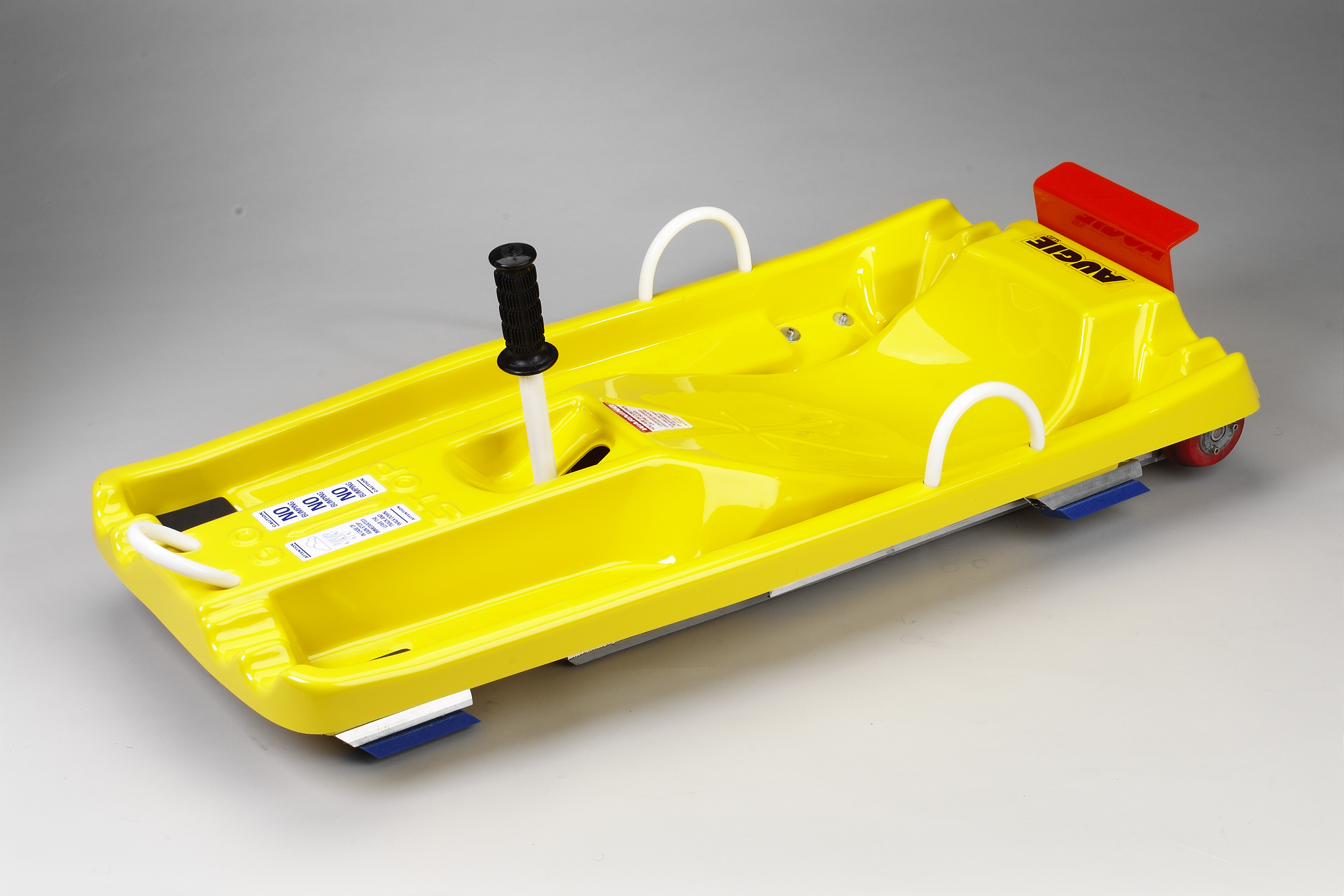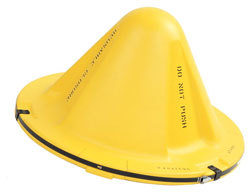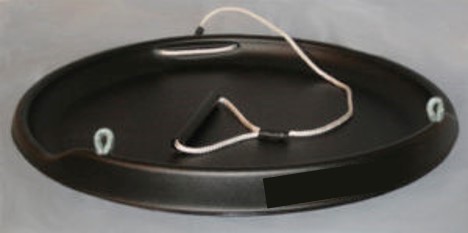
Materials Used in Vacuum Forming:
- ABS – very common, available in a variety of colors and textures and flame retardant grades (UL94-V0), good impact resistance
- PC – good impact resistance and resistance to high temperatures
- HDPE – impact, chemical and cold temperature resistant; cost effective
- TPO – durable and impact resistant, available in high gloss finish
- HIPS – low cost, available in a variety of colors & easy to form
- PVC – available in flame retardant, in a range of colors & textures, rigid and impact resistant
Vacuum forming is a simple process, where a hot sheet is stretched over a mold, and vacuum is applied between the sheet and the mold, pulling the sheet tight to the mold. The soft, heated sheet of plastic is draped into a female mold. Vacuum lines built into the mold draw the air from between the plastic and the mold, drawing the plastic against the surface of the mold while atmospheric pressure pushes against the backside of the plastic. Once it cools, the sheet takes on the shape of the tool. With our 3-dimensional trimming equipment, we can then trim out the finished part with a high degree of accuracy and consistency.
Applications:
Vacuum formed parts are single component parts that come out of the vacuum forming process as the actual product or a substantial part of the finished product. These are enclosures or housings that are often replacements for sheet metal or fiberglass that need to be light but durable and have good strength relative to weight. Applications of custom vacuum forming are seen in many industries, including medical equipment panels & enclosures, engine covers for aerospace, transportation & construction industries, and rail-car interior trim & seat components. Vacuum forming can provide a better alternative to other methods such as complex fabricated sheet metal, fiberglass, or injection molding techniques. There are an infinite number of applications of this process.

Upgrade from Sheet Metal: Manufacturers using sheet metal for product housings can affordably upgrade to thermoformed plastic to create a more contemporary exterior for their product.
Upgrade from Molded Fiberglass: Products with fiberglass exteriors can be significantly reduced in weight and cost by upgrading to thermoformed plastic.
Bezels and Fronts: Housings for CRTs, touch screens or liquid crystal, flat panel or plasma displays are excellent candidates for thermoformed plastic.
Consoles and Instrument Panels: A panel that requires precise openings for gauges and controls, but also needs to be attractive and rugged, can be cost-effectively produced via thermoforming.
Three-Dimensional Housings and Enclosures: Exteriors of business machines, office equipment, medical and diagnostic units, electrical and electronic devices, and other consumer and commercial products are excellent applications for thermoformed plastic.
Doors, Hatches, Covers and Movable Panels: Panels that face the user, and need to be durable and attractive, are ideal candidates for thermoforming. They can be affordably produced with indentations and cutouts for hinges, latches, handles, brackets and other hardware.
Panels with Undercuts and Returns: Parts with edges that turn under, or panels with sections that wrap back, can be produced through an advanced the process called “pressure forming”.
Twin-Wall Panels: When a double-walled panel is needed, it can be produced in a single, affordable process via what’s known as “twin-sheet thermoforming”.
Wide Range of Colors and Finishes: Parts can be thermoformed with an inherent color in the resin, or the formed part can be painted and/or screen printed, and the surface can be hot stamped or given other finishes.
EMI/RFI Shielding: For electrical or electronic equipment that require housings with EMI and/or RFI shielding, it can be applied to required specifications in a secondary operation.
Insulation: Thermal or acoustic insulation can be affordably applied to the backside of a thermoformed part.
Advantages:
Vacuum forming is a one-sided process. The finished part will have shape and detail on one side. The advantages to vacuum forming are less expensive tooling, faster turn-around and easier, less expensive updates and modifications compared to injection molding.
Attractive: Thermoformed plastic parts can be produced in a nearly unlimited variety of base materials, finishes, colors and textures.
Molded-In Styling Features: Logos, model designations, and other text and images can be formed right into the surface of the part. This eliminates the time and labor of adding these features, and they are a permanent feature of the part.
Durable yet Flexible: No material is more resilient than the thermoplastic resins that are available today. A vacuum formed part will not rust, it will not rot, it will not chip, and it can withstand considerable impact and return to its original shape!
Lightweight: Thermoformed plastic parts can be made from low, density plastic with very thin walls to create a strong and durable, yet relatively lightweight part. Thermoformed plastic is considerably lighter than molded fiberglass or sheet metal.
Less Expensive Than Other Processes: Compared to sheet metal or handlayed fiberglass, thermoformed plastic parts can be much cheaper. And tooling for thermoforming is many times less expensive than tooling for other plastic processes, such as injection, rotational or blow molding.
Fast Time-to-Market: Tooling for thermoformed parts can be designed, engineered and fabricated in weeks, putting thermoformed parts into the assembly stream much faster than other processes.
Design Flexibility: The tooling used to thermoform parts can quickly and economically be modified to create different versions of a part for different configurations of a basic product.
Seamless: Thermoformed parts, panels and housings are elegantly simple, consisting of a single, seamless sheet of plastic formed to the exact dimensions, color, finish and texture needed by the OEM. Thermoformed plastic is the logical upgrade from sheet metal or fiberglass when parts, panels, housings and enclosures are needed that must be durable and attractive, yet lightweight and affordable.

Vacuum Forming Process
Thermoformed (or vacuum formed, as it is also known) plastic is THE state-of-the-art process for producing panels, covers, bezels and housings that are attractive and durable — yet lightweight and affordable.
The entire process has six steps.
1. Create a Mold and Tooling: A mold is designed and fabricated along with secondary fixturing to support the thermoforming process.
2. Heat the Flat Sheet of Plastic: A flat sheet of thermoplastic material is clamped into a frame, cycled into a heating chamber and heated to a pre-determined optimal temperature (Figure 1-Top).
3. Drape the Hot Sheet of Plastic Over or Into a Mold: The pliable, heated sheet of plastic is then either draped into a female mold or over a male mold, and tiny vacuum lines in the mold draw out the air between the plastic and the mold, while normal atmospheric pressure pushes the softened plastic against the mold.
4. Remove the Formed Sheet of Plastic from the Mold: Once the sheet of plastic has taken on the shape of the mold, it is cooled and withdrawn from the mold, then removed from the clamp frame.
5. Trim the Part: There is often excess material around the edges of the part, and that material is routed or trimmed off. If any additional machined features are called for, they are trimmed out.
6. Finish the Part: The part may be painted, screen printed or hot-stamped, and assembly—such as the attachment of hardware, subassemblies, cabling or wiring, electrical or electronic components, or other parts—may be performed.
Vacuum forming is well suited to large parts with moderate volumes. It offers lower cost tooling and quicker prototyping than other alternatives. Contact us to find out how vacuum forming can be used for your application.
Vacuum Forming Capabilities at Universal Plastics:
Universal Plastics is the largest precision heavy gauge custom thermoformer in the Northeastern US with an asset base of 22 pressure formers, 14 vacuum formers and 26 5-axis trimming machines, supplying our customers with vacuum forming, pressure forming, including twin sheet forming and complex assemblies, with part sizes up to 12’ x 9’. In addition, we offer in-house tooling, an experienced engineering staff, and a full complement of secondary/finishing services, including our new state of the art paint booths which can produce automotive quality finishes. With a range of rotary formers, rapid manufacturing processes, and a global supply chain, we can produce thermoformed parts at the most competitive prices.
In addition to custom thermoforming, Universal Plastics also offers injection molding (including gas assist and structural foam molding) and custom blow molding. We would be glad to talk with you about the optimal process for your needs.
